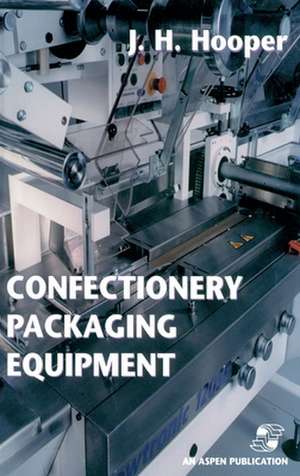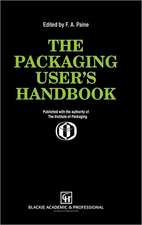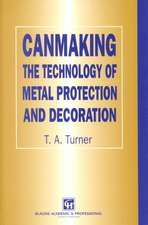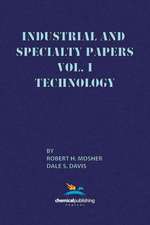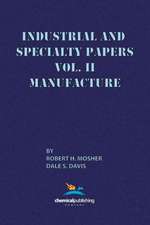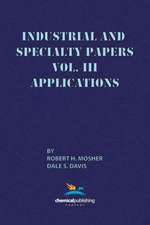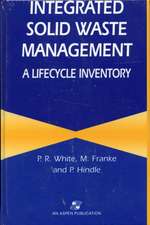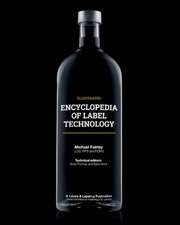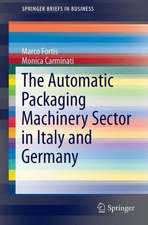Confectionery Packaging Equipment
Autor Jeffrey H. Hooperen Limba Engleză Hardback – 30 sep 1998
Preț: 644.95 lei
Preț vechi: 758.77 lei
-15% Nou
Puncte Express: 967
Preț estimativ în valută:
123.45€ • 134.14$ • 103.77£
123.45€ • 134.14$ • 103.77£
Carte tipărită la comandă
Livrare economică 21 aprilie-05 mai
Preluare comenzi: 021 569.72.76
Specificații
ISBN-13: 9780834212374
ISBN-10: 0834212374
Pagini: 268
Ilustrații: XVII, 268 p.
Dimensiuni: 155 x 235 x 20 mm
Greutate: 0.54 kg
Ediția:1999
Editura: Springer Us
Colecția Springer
Locul publicării:New York, NY, United States
ISBN-10: 0834212374
Pagini: 268
Ilustrații: XVII, 268 p.
Dimensiuni: 155 x 235 x 20 mm
Greutate: 0.54 kg
Ediția:1999
Editura: Springer Us
Colecția Springer
Locul publicării:New York, NY, United States
Public țintă
ResearchCuprins
1 An introduction to packaging machines.- 1.1 Fundamental questions.- 1.2 The start of the packaging machine industry.- 1.3 Types of packaging machines.- 1.4 Associated machinery.- 2 Common features in conventional wrapping machines.- 2.1 Basics of wrapping machine design.- 2.2 Conventional wrapping machines.- 2.3 The supply of aluminium foil and paper wrappers.- 2.4 Component parts used when supplying wrappers and foil from a reel.- 2.5 Adhesive application.- 2.6 Folding the wrapper.- 2.7 Stacking.- 2.8 Mechanical latches and trips and machine inhibition.- 2.9 Machine guards and safety mechanisms.- 2.10 Lubrication.- 2.11 Timing—the synchronization of machine operations.- 2.12 Other methods of machine synchronization.- 3 The distribution of produce from manufacture to packaging machines.- 3.1 Automatic feeding to bar wrapping machines.- 3.2 Automatic feeder developments.- 3.3 Summary of basic system.- 3.4 Controls.- 3.5 Automatic feeders for horizontal FFS (pillowpack) machines.- 3.6Simple distribution feeders.- 3.7 Waterfall feeders.- 4 Basic descriptions of some of the most used confectionery wrapping machines and machine interaction with materials.- 4.1 Wrapping machines for specific wrapping operations.- 4.2 Chocolate bar wrappers.- 4.3 Batch rollers, rope sizing and cut and wrap machines.- 4.4 Foiling machines.- 4.5 Egg foiling machines.- 4.6 Rollwrapping machines.- 4.7 Stickpack machines.- 4.8 Twist wrapping machines.- 4.9 A brief look at interaction between materials and machines.- 5 Equipment that complements packaging machines.- 5.1 Metal detectors.- 5.2 Checkweighers.- 5.3 Weighers and fillers.- 5.4 Robots (used as pick and place machines).- 5.5 Image recognition robots.- 5.6 Blister packing machines.- 5.7 Ancillary equipment.- 5.8 Splicing attachments.- 5.9 High speed fault analysis.- 6 Form, fill, seal wrapping machines.- 6.1 Form, fill, seal (FFS) machines.- 6.2 Horizontal FFS machines.- 6.3 Relationship between lengths, speeds and synchronization ofposition.- 6.4 Speed of machine elements.- 6.5 Synchronization of positions.- 6.6 Pack dimensions.- 6.7 Transfer assistance.- 6.8 Adjustments during production for mechanically operated machines.- 6.9 Changing a machine to facilitate different sizes.- 6.10 Electronic FFS machines.- 6.11 Common features in horizontal FFS wrapping machines.- 6.12 Vertical form, fill, seal machines.- 6.13 Multi-lane wrapping machines.- 6.14 Making multi-packs on horizontal FFS machines.- 6.15 Methods of feeding horizontal FFS type wrapping machines.- 6.16 Special machines.- 7 Equipment that is allied to packaging machinery.- 7.1 Allied machinery.- 7.2 Buffer storage.- 7.3 Carton erectors.- 7.4 Case erectors.- 7.5 Case sealers.- 7.6 Channelizers.- 7.7 Chillers.- 7.8 Collators.- 7.9 Conveyors.- 7.10 Automatic belt tracking devices.- 7.11 Conveyor access control (gates).- 7.12 Overwrapping machines.- 7.13 Pallet stretch wrapping machines.- 7.14 Palletizers.- 7.15 Special overwrapping applications.- 8 The operation of machines for filling cartons and cases.- 8.1 Loading and filling machines for cartons and cases.- 8.2 Machine 1—casing machine with mainly pneumatic operation.- 8.3 Machine 2—mechanically operated carton loading machine.- 8.4 Machine 3—casing machine with pneumatic operation and electronic control.- 8.5 Machine 4—mechanical collation and electronic control: machine principle suitable for both carton and case loading.- 8.6 Machine 5—pneumatic operation with PLC controls.- 8.7 Lined carton machines.- 8.8 Small tubes as cartons.- 8.9 Robots for carton filling.- 9 Factory services, maintenance and hygiene relative to packaging.- 9.1 Factory services.- 9.2 Electrical supplies to machines.- 9.3 Compressed air.- 9.4 Vacuum.- 9.5 Air conditioning.- 9.6 Cooling air.- 9.7 Drinking water and hot water.- 9.8 Cooling water.- 9.9 Waste extraction.- 9.10 Maintenance matters.- 9.11 Hygiene and packaging.- 10 A packaging project: machine performance and used machinery.- 10.1 The approach to apackaging project.- 10.2 Machine performance.- 10.3 Buying used machinery.
